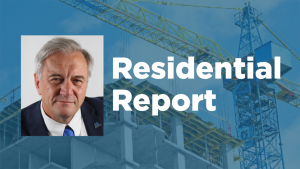One of London, Ont.’s worst traffic bottlenecks will soon be no more, but delivering the cure could create even more congestion in the short term.
That’s because to address the problem — a railway subway that reduces Wharncliffe Road’s busy north end to single lanes in either direction — another temporary bridge must be built to divert railway traffic.
The subway is one of two along the city’s bustling west end corridor and both bottleneck traffic during morning and afternoon commutes. The otherwise mostly four-lane road forms part of a route that provides access to Western University from the city’s south end.
Without intervention, the traffic clot at Wharncliffe’s northernmost end will only get worse, says an environmental assessment analysis by Aecom Canada Ltd. At present, the location sees 930 vehicles per hour per lane during evening rush hour. As the city’s population grows, the area will carry 1,200 during the same time period.
This city had begun the widening process by expanding the bridge span of the subway.
"It’s a positive project," and an interesting one, said Ted Koza, London’s transportation design engineer. The rail diversion is the city’s first since the 1980s and will be about 500 metres long.
Ted Koza
City of London
The intent is to allow traffic on the line owned by Canadian Pacific Railway to continue without interruption. Trains will use a temporary bridge and tracks as the old subway is demolished.
"It’s the most preferred method that the rail authorities use," Koza said. "It obviously minimizes any impacts and having to parallel operations because the trains continue to use the diversion tracks throughout the whole construction phase."
Aecom is carrying out the resident inspection and contract administration for the project. General contractor McLean Taylor Construction Limited of St. Marys began work on the $13-million construction project in late May.
Kyle McCutcheon, McLean Taylor project manager, said the project involves working closely with the railway company.
"We have to have full flagmen onsite for this job, so there will be a lot of scheduling with them," he explained.
But the big challenge in mid May was finalizing the shoring system — an embankment south of the existing subway to support a temporary bridge and tracks across Wharncliffe.
Not only does the embankment have to maintain rail traffic, but it must also allow for pedestrian access. One of the existing culverts used by people on foot will therefore be extended through the temporary embankment.
The culvert must be designed to support the rail above.
"So it’s not a standard, ‘throw up a piece of pipe in there.’ It’s got to be a substantial design that CP will accept," said McCutcheon.
Transporting the 50,000 tonnes of fill needed for the embankment to the staging area — a local park that has been temporarily closed — will temporarily increase traffic volume on nearby streets, as will the fill’s removal when it comes time to remove the diversion structure.
"Hopefully we’ll have the public’s understanding that it’s going to be congested," said McCutcheon.
J-AAR Excavating Limited of London is handling the fill work.
Koza said the existing embankment will support the new permanent bridge.
"The embankment for the most part won’t look any different than it is right now. It’s just the track that’s going to be shifted over," he said.
The new bridge will be basic with a solid structural steel deck.
Koza said there is a need for several road closures to accommodate bridge removal, girder erection, overhead work and the addition of the temporary structure and its eventual removal.
Most of these tasks will take place on weekends to keep the road open during the workweek.
"We’ll do our best to maintain pedestrian traffic throughout," he added, noting the area has a large student population.
The subway was built in 1931 and its two riveted steel plate girders accommodate one track.
The current bridge has a 4.7-metre clearance from the road below. The expansion will slightly increase that clearance and create a bridge span of about 36 metres.
Below the new structure builders will add two more lanes, a centre turn lane, new bicycle lanes north and south and a larger-than-normal sidewalk to accommodate the heavy foot traffic. Sewer replacement and reconstruction will also take place.
The city has targeted November 2018 as the substantial completion date for the bridge replacement.
The project is part of a larger $28.1-million road widening effort that city officials timed to co-ordinate with the development of a bus rapid transit system through London’s core.
The city will tender the second phase later this year. That project begins in spring 2018 and finishes at about the same time as phase one, Koza said.
The second phase widens a portion of the road north of the subway, replaces watermains and sewers in that area and adds enhancements to the Oxford and Wharncliffe intersection.










Recent Comments
comments for this post are closed